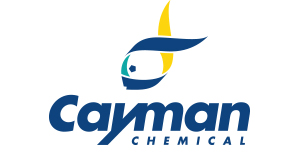Isosteviol, CAS 27975-19-5
Isosteviol, CAS 27975-19-5
SKU
CAY36916-1
Packaging Unit
1 g
Manufacturer
Cayman Chemical
Availability:
loading...
Price is loading...
Formulation: A solid
Formal Name: (4α,8β,13β)-13-methyl-16-oxo-17-norkauran-18-oic acid
Purity: ≥98%
Formula Markup: C20H30O3
CAS Number: 27975-19-5
Notes: Isosteviol is a diterpenoid that has been found in P. tetraspermum and has diverse biological activities.{69631,69632,69633,69634} It is also a hydrolysis product of the natural non-caloric sweetener stevioside (Item No. 11902).{69632} Isosteviol scavenges hydroxyl and superoxide radicals in cell-free assays (IC50s = 76.92 and 91.7 µg/ml, respectively) and inhibits DNA polymerase α, β, and λ, as well as topoisomerase II (IC50s = 64, 177, 103, and 190 µM, respectively).{69631,69632} It is active against various Gram-positive and Gram-negative bacteria, including several strains of methicillin-resistant S. aureus (MRSA; MICs = 8-250 µg/ml), and fungi, including C. albicans and T. mentagrophytes (MICs = 62.5-500 µg/ml).{69631} Isosteviol inhibits the proliferation of MOLT-4 leukemia cells in a concentration-dependent manner.{69632} It induces relaxation of isolated rat aortic strips precontracted with vasopressin, an effect that can be reversed by the potassium channel inhibitors glibenclamide (glyburide; Item No. 15009) or apamin (Item No. 17082) but not charybdotoxin (Item No. 24115).{69633} Isosteviol (5 and 10 mg/kg) reduces plasma glucose levels in the intravenous glucose tolerance test in Zucker diabetic rats.{69634} It has been used in the synthesis of isosteviol glycosides with anticancer activity.{69635}
Formal Name: (4α,8β,13β)-13-methyl-16-oxo-17-norkauran-18-oic acid
Purity: ≥98%
Formula Markup: C20H30O3
CAS Number: 27975-19-5
Notes: Isosteviol is a diterpenoid that has been found in P. tetraspermum and has diverse biological activities.{69631,69632,69633,69634} It is also a hydrolysis product of the natural non-caloric sweetener stevioside (Item No. 11902).{69632} Isosteviol scavenges hydroxyl and superoxide radicals in cell-free assays (IC50s = 76.92 and 91.7 µg/ml, respectively) and inhibits DNA polymerase α, β, and λ, as well as topoisomerase II (IC50s = 64, 177, 103, and 190 µM, respectively).{69631,69632} It is active against various Gram-positive and Gram-negative bacteria, including several strains of methicillin-resistant S. aureus (MRSA; MICs = 8-250 µg/ml), and fungi, including C. albicans and T. mentagrophytes (MICs = 62.5-500 µg/ml).{69631} Isosteviol inhibits the proliferation of MOLT-4 leukemia cells in a concentration-dependent manner.{69632} It induces relaxation of isolated rat aortic strips precontracted with vasopressin, an effect that can be reversed by the potassium channel inhibitors glibenclamide (glyburide; Item No. 15009) or apamin (Item No. 17082) but not charybdotoxin (Item No. 24115).{69633} Isosteviol (5 and 10 mg/kg) reduces plasma glucose levels in the intravenous glucose tolerance test in Zucker diabetic rats.{69634} It has been used in the synthesis of isosteviol glycosides with anticancer activity.{69635}
| SKU | CAY36916-1 |
|---|---|
| Manufacturer | Cayman Chemical |
| Manufacturer SKU | 36916-1 |
| Package Unit | 1 g |
| Quantity Unit | STK |
| Product information (PDF) |
|
| MSDS (PDF) | Download |

 Deutsch
Deutsch










